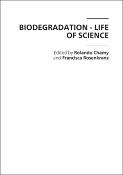Options
Ecotoxicological behaviour of some cathionic and amphoteric surfactants (biodegradation, toxicity and risk assessment)
Date issued
2013
Abstract
The aim of this chapter was the cationic and amphoteric surfactants ecotoxicological characterization according to European Regulation EC no. 648/2004 and risk assessment generated by them on the aquatic environment. Experimental researches were performed to establish the biodegradation level and aquatic toxicity, risk assessment and estimation of the maximum allowable limits in surface water. Has been pointed that the cationic and amphoteric surfactants have a primary biodegradation >80% and a final removal >60%, noting that the cationic surfactants have registered the lowest values. In terms of acute aquatic toxicity was found that cationic surfactants are toxic for crustaceans, algae and bacteria ("Acute Toxicity, class 1") and amphoteric surfactants are toxic to fish, crustaceans and algae ("Acute Toxicity, class 2"). A complementary risk assessment study was performed for biodegradation liquids of cationic
surfactants. The biodegradation effluents maintain the compounds toxicity on algae and bacteria in case of standard surfactant (Hyamine 1622), which means that in the surfactant biodegradation effluents the active substance was persistent or can arise recalcitrant metabolites. Based on PEC / PNEC ratios, the aquatic risk assessment of cationic and amphoteric surfactants has been assessed: cationic surfactants PEC / PNEC > 1 - risk to aquatic organisms; amphoteric surfactant PEC / PNEC <1 - no risk to aquatic organisms. Were estimated maximum allowable concentrations (MATC) of cationic surfactants (≤ 0.002 mg/L) and amphoteric (0.01 mg/L) in surface waters, so that the aquatic life in trophic chain, will not be affected. The present study was relevant for the conformity control of market cleanup products to assure the human health and environment protection.
surfactants. The biodegradation effluents maintain the compounds toxicity on algae and bacteria in case of standard surfactant (Hyamine 1622), which means that in the surfactant biodegradation effluents the active substance was persistent or can arise recalcitrant metabolites. Based on PEC / PNEC ratios, the aquatic risk assessment of cationic and amphoteric surfactants has been assessed: cationic surfactants PEC / PNEC > 1 - risk to aquatic organisms; amphoteric surfactant PEC / PNEC <1 - no risk to aquatic organisms. Were estimated maximum allowable concentrations (MATC) of cationic surfactants (≤ 0.002 mg/L) and amphoteric (0.01 mg/L) in surface waters, so that the aquatic life in trophic chain, will not be affected. The present study was relevant for the conformity control of market cleanup products to assure the human health and environment protection.
Files
Loading...
Name
Ecotoxicological Behavior 2013.pdf
Size
2.46 MB
Format
Adobe PDF
Checksum
(MD5):c68dcfb001151c4e393273931b86b1d8